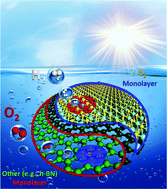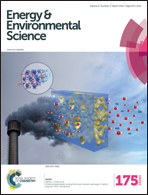Efficient band structure tuning, charge separation, and visible-light response in ZrS2-based van der Waals heterostructures†
Abstract
As a fast emerging topic, van der Waals heterostructures can modify two-dimensional (2D) layered materials with desired properties, thus greatly extending the applications of these materials. Via state-of-the-art first-principles calculations, we systematically study four types of van der Waals heterostructures formed by monolayer graphene, h-BN, g-C3N4, and polyphenylene on ZrS2 nanosheets. A direct band gap can be obtained in the graphene/ZrS2 heterostructure, endowing graphene with the real ability to be applied in nanoelectronics, whereas the van der Waals interactions of graphene significantly broadens the optical absorption of ZrS2. The conduction band and valence band of the four heterostructures are contributed by the ZrS2 layer and the other layer, respectively, meaning good charge separation is achieved. We proposed that the strained h-BN/ZrS2 and g-C3N4/ZrS2 heterostructures satisfy fundamental aspects for photocatalytic water splitting, with the reduction and oxidation levels well inside their band gaps. By forming heterostructures with ZrS2, the optical properties of h-BN, g-C3N4 and polyphenylene show a remarkable improvement in the visible-light region. The findings in this study will be of broad interest in van der Waals heterostructure research and in the photocatalysis field.



 Please wait while we load your content...
Please wait while we load your content...